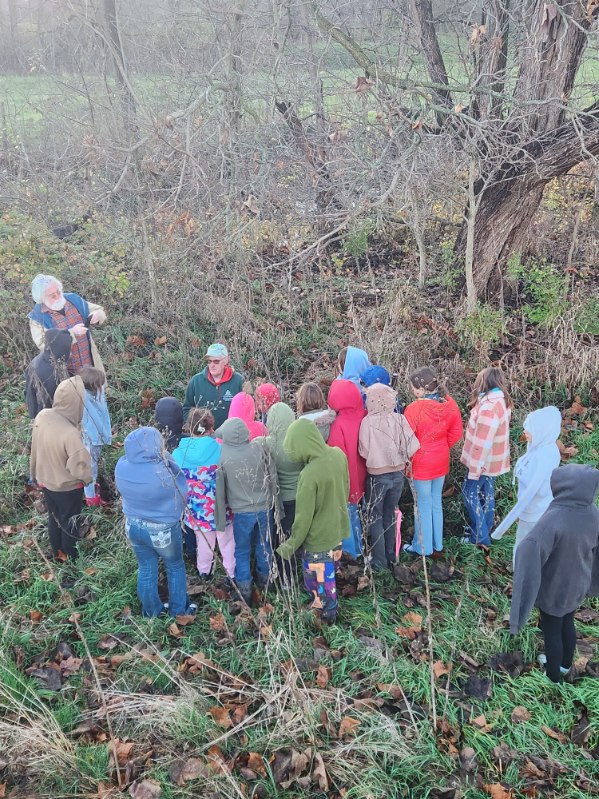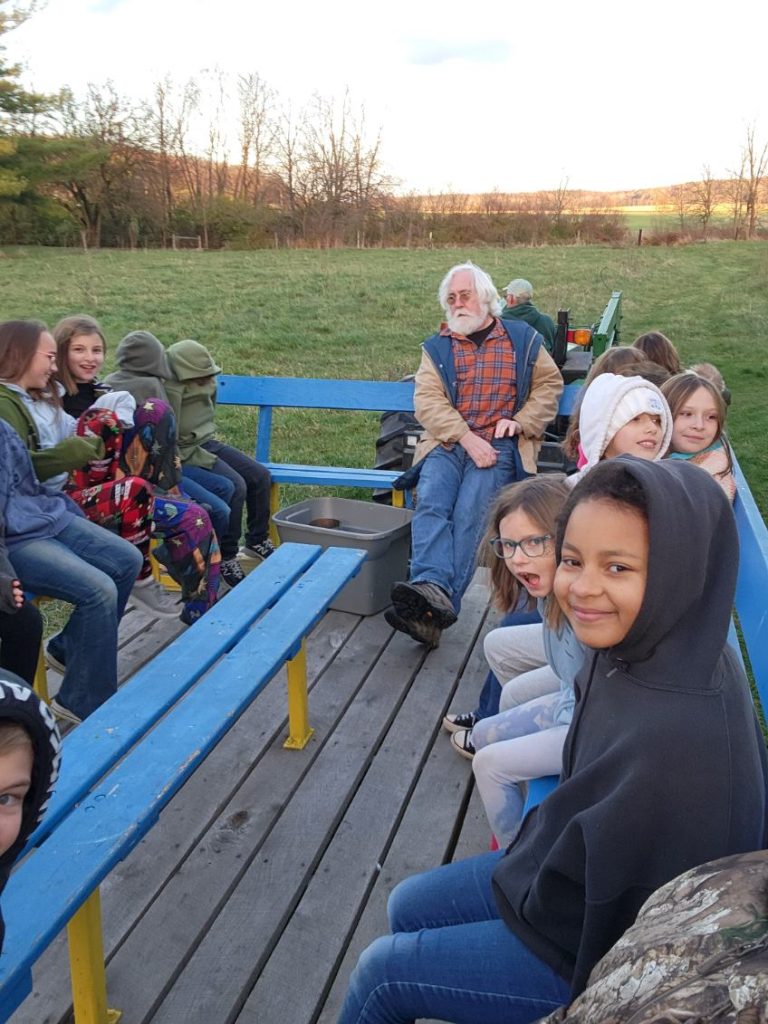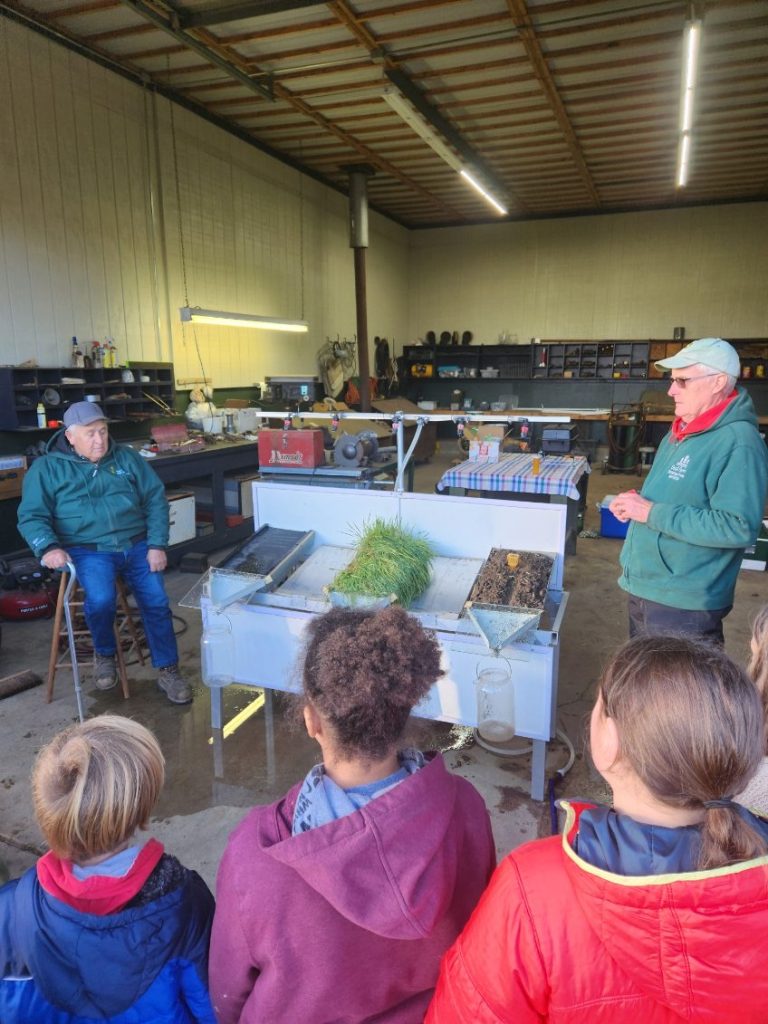The Ben Logan Environmental Science Club made a field trip to a farm along the Mad River. Bob and Lois Stoll hosted the group. They started out in the “Timber Frame” barn built pre Civil War and discussion focused on “what did the farms look like in the mid 1800’s”. Beams in the barn are over 30 feet long from massive trees found during that time. Then the group moved to the machine shed where a rain simulator was set up. The simulator displayed erosion on bare soil vs clean water off plant covered soil. Also hard surfaces with contaminants like oil and antifreeze were shown how they move off that surface to our water courses. The group enjoyed a wagon ride across Mad River and learned why riparian zones of trees and vegetation are so important to the River and how Regenerative Farming Practices improve soil and produce more nutrient dense foods for animals and people.
Learn more on Regenified.com. Consider a donation to the Logancountylandtrust.org.





